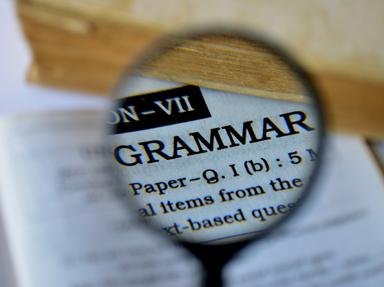Quiz Answer Key and Fun Facts
1. One of the best known diacritics can be found in the Spanish language, mostly above the letter 'n' in words like 'sue˝o' (sleep) and 'a˝o' (year). What is the little squiggle called?
2. Some European words contain two dots above a letter in a word, like the French 'na´ve' (lacking in sophistication), but mostly in German words like 'sch÷n' (beautiful). All of the following but one are terms for these dots. Which one is not?
3. The dot above the lowercase letters 'i' and 'j' is called a what?
4. If you see words making use of the double acute accent (two dashes over a letter, like over the 'u' in the word 'betűkÚszletek'), chances are you are looking at what language?
5. Sometimes, particularly with Nordic languages, you'll see a line drawn completely through a letter, like the Nordic words '°stdansk' and 'st°d' and even towns like S°r-Tr°ndelag, Norway. No, it has nothing to do with the movie, 'Ghostbusters'. What's it called?
6. This diacritical note is used in the Vietnamese language and looks like a question mark above the letter, but no dot underneath. What is this called?
7. Some letters have a little extra tail at the bottom, like the French word 'fašade' (face of a building, or an artificial front). This little tail is called a what?
8. The Scandinavians and Czech languages sometimes employ a little circle above a letter, mostly the letter 'A' in words like the Swedish 'ňngstr÷m' (a unit of length), and even the word '┼' (river). What is the little circle called?
9. Romanized versions of Japanese words will usually include a stripe over a letter, mostly as a pronunciation note like in the name 'kōtsū' (traffic) and even the capitol city 'Tōkyō'. What are the stripes known as?
10. Punctuation marks are sometimes used as diacritics. Which of the following is NOT?
Source: Author
Oddball
This quiz was reviewed by FunTrivia editor
stuthehistoryguy before going online.
Any errors found in FunTrivia content are routinely corrected through our feedback system.
